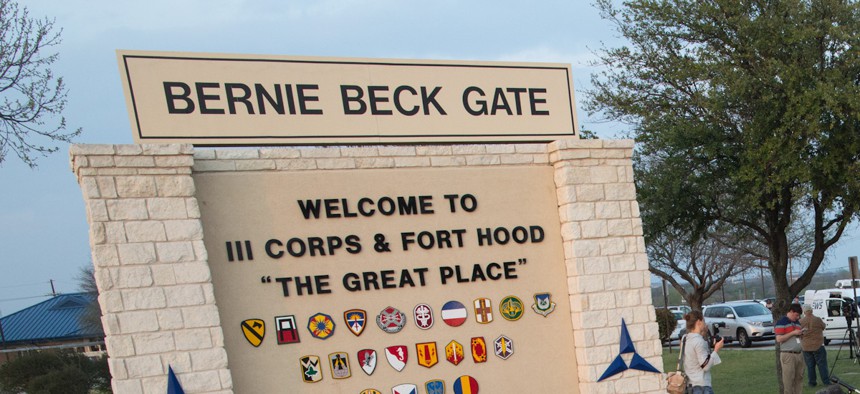Fort Hood Shooter: Why Did He Do It?
After killing three people, wounding 16 others, and then turning the gun on himself at Fort Hood, there are still few clues about why Spec. Ivan Lopez did it. By Stephanie Gaskell
This story has been updated.
Army Spec. Ivan Lopez did the unthinkable when he shot three fellow soldiers, wounded 16 others and then turned the gun on himself during a terrifying shooting at Fort Hood on Wednesday afternoon. The 34-year-old husband and father took with him his darkest secrets when he took his own life, leaving investigators scrambling to answer the most difficult question: Why?
Since the shooting, details about Lopez and his military service have been trickling out. He was deployed to Iraq as a truck driver in 2011, during the final months of the war, but had never seen combat. There is no record of his being wounded in combat or awarded a Purple Heart.
Lopez lived off post with his wife and 3-year-old daughter, according to news reports, after being transferred to Fort Hood in February. A native of Puerto Rico, he joined the National Guard there in 1999 and deployed for a year to the Sinai Peninsula in 2007. He joined the active-duty Army in 2010, officials said. Puerto Rico National Guard Command Sgt. Maj. Nelson Bigas, who served with Lopez, told CNN that Lopez was "one of the best soldiers we had in our infantry."
“He was a very experienced soldier,” Army Chief of Staff Gen. Ray Odierno said.
Army Secretary John McHugh said Lopez had "self-reported" suffering a traumatic brain injury while deployed. “He was undergoing a variety of treatment and diagnoses for mental health conditions ranging from depression and anxiety to sleeping disturbances,” McHugh said. Lopez had a clean military record with no behavioral problems, and there was no indication that Lopez had any “involvement with extremist organizations of any kind,” McHugh added.
“We’re not making any assumptions by that,” he said. “We will go where the facts lead us.”
At a press conference at Fort Hood on Thursday, Fort Hood commander Lt. Gen. Mark Milley said investigators were looking into reports that there was a “verbal altercation” before the shooting. “We’re trying to figure out what the trigger event was,” he said.
“We have very strong evidence that he had a medical history that indicated unstable psychiatric conditions. We believe that to be the fundamental underlying cause,” Milley said. Though a spokesman for Lopez’s family told the Associated Press that they were unaware that he was being treated for mental health problems. Other news reports said Lopez was distraught over the recent death of his mother.
Investigators have questioned Lopez’s distraught wife. Neighbors said he was friendly. “Obviously we are digging deep into his background,” Milley said.
In 2009, when Army Maj. Nidal Hasan killed 13 people at Fort Hood, he shouted “Allahu Akbar” – an Islamic rallying cry – before he opened fire. Hasan was apprehended and said he committed the shooting to stop troops from killing more Taliban members in Afghanistan. He was sentenced to death in August 2013.
In this latest case, answers won’t come as easy.
There’s already widespread speculation about whether post-traumatic stress disorder is to blame, while others are urging caution. “In moments like this, there is a tendency by some to paint a broad brush across the entire veterans community, and it's important to guard against that mistake,” said Paul Rieckhoff, founder and CEO of Iraq and Afghanistan Veterans of America.
Officials have not identified the three soldiers who were killed. Of the 16 wounded soldiers, four have been released from the hospital. A memorial ceremony is planned for early next week.






